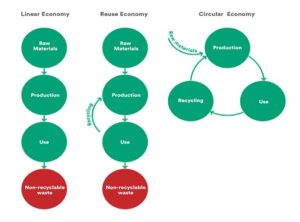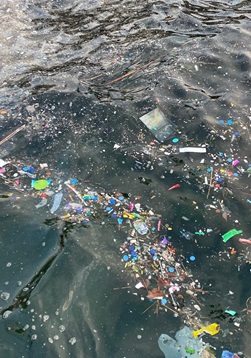We should start by informing people about what zero waste actually means. “Zero Waste” is a movement to reduce the maximum amount of material produced. To do that it is necessary to rethink the use of materials that we consume and throw away, and think about other solutions to reduce daily trash. The goal is; no trash to be sent to landfills, refuse destructors or the ocean. Did you know that only 9% of the plastics are actually recycled?
Think of a person throwing their trash into the bin but it can be recycled. In that bin, if there was a system that could separate the product into the recycling bins, that could be recycled rather than thrown out. Secondly, not only should there be more projects on zero waste but they should be fun, creative and worthy of people’s time so they are actually interested in participating. Furthermore, if there were more online projects for zero waste, people could take part in them more since it is easier. In addition to these, if there were more recycling bins accessible, people would be more likely to use recycling bins rather than usual ones. Moreover, if there was a penalty for those who throw their trash on the ground instead of the bin, people would be cautious of the fee and throw their trash into the bin, maybe into a recycling bin.
We should raise awareness about the importance of separation. Sweden is one of the countries that has the most successful recycling rates. How did they achieve this and what is separation? They gave importance to make sure the citizens were educated and attentive in this system they created. Separation system works like this: you separate your waste into categories like recyclable and non-recyclable (these two categories are also divided into many categories as well like glass, plastic, organic waste and etc.), put separated rubbish into different bags and leave them in the correct bin that was made for the type of rubbish you separated. The non-recyclable waste is burned in plants that transform their combustion into energy which provides electricity for homes in the country.
Japan is taking the successful recycling rates to a greater extent by using the same separation method. Japan is also known for being exceedingly potent at recycling. They separate their waste into 34 categories!

Another way to encourage people into contributing to our future is turning the countries’ economy into a circular economy. According to the European Parliament the circular economy is a model of production and consumption, which involves sharing, leasing, reusing, repairing, refurbishing and recycling existing materials and products for as long as possible. Zero Waste is a set of principles that guide us towards a goal, while a circular economy is a model that provides a systematic framework. We can also think of zero waste as a goal, and a circular economy as a means to get there. When we achieve this, at least people feel supported, therefore be more cooperative when it comes to Zero Waste and that the steps they have taken to save our future are not wasted due to economic policies.
With the help of our partners, a research was done in Porto, Portugal to look for stores that sell reusable and bulk products. There were more stores than we expected and with this we came to the conclusion that it is a business which increases as time goes by. People are choosing a more environmental route when it comes to their shopping decisions.
Some of them are:
-
- Loja do Zero (Online store with reusable products)
- Doce Segredo (Sells in bulk)
- come (Sells in bulk)
- IdealBio (Sells in bulk, reusable products)
- Zero Plástico (Sells reusable products)
This is a departure from the traditional, linear economic model, which is based on a take-make-consume-throw away pattern. This model relies on large quantities of cheap, easily accessible material energy.
Evidently, it all ends with people. We can’t just stand and wait for the pollution we created to halt by itself. We have to educate ourselves and everyone around us. The Earth is ours and ours only it is our home therefore we should protect it.
“We don’t need a handful of people doing zero waste perfectly. We need millions of people doing it imperfectly.” – Anne Marie Bonneau
References:
https://www.rts.com/resources/guides/circular-economy/
https://archive.ellenmacarthurfoundation.org/explore/the-circular-economy-in-detail
https://www.zerowaste.com/blog/zero-waste-vs-circular-economy-a-guide/
https://www.zerowaste.com/blog/zero-waste-communities-across-the-globe/







You must be logged in to post a comment.